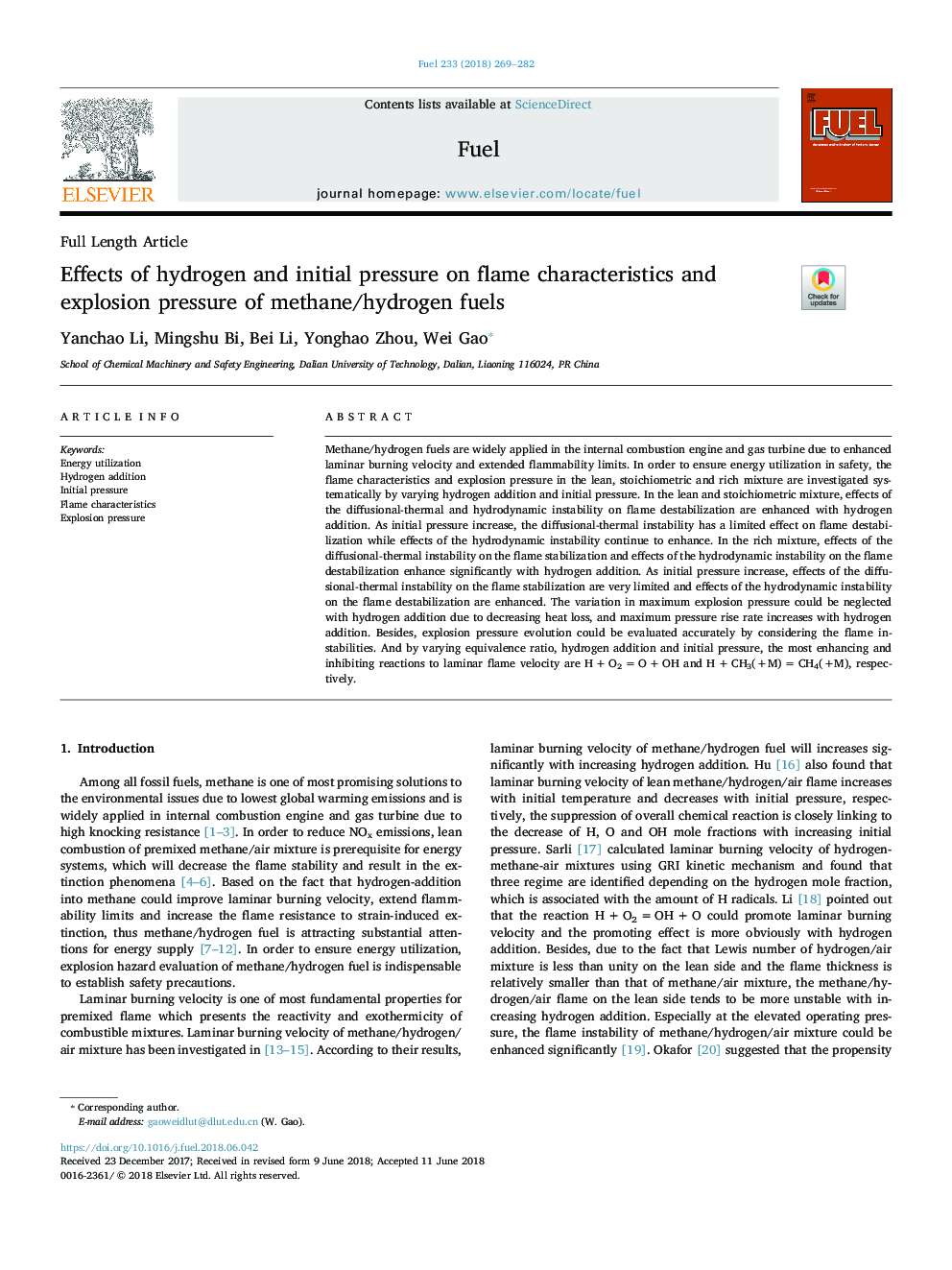| کد مقاله | کد نشریه | سال انتشار | مقاله انگلیسی | نسخه تمام متن |
|---|---|---|---|---|
| 6630209 | 1424931 | 2018 | 14 صفحه PDF | دانلود رایگان |
عنوان انگلیسی مقاله ISI
Effects of hydrogen and initial pressure on flame characteristics and explosion pressure of methane/hydrogen fuels
ترجمه فارسی عنوان
اثر هیدروژن و فشار اولیه بر ویژگی های شعله و فشار انفجار سوخت های متان / هیدروژن
دانلود مقاله + سفارش ترجمه
دانلود مقاله ISI انگلیسی
رایگان برای ایرانیان
کلمات کلیدی
استفاده از انرژی، افزودن هیدروژن، فشار اولیه، مشخصات شعله فشار انفجاری،
موضوعات مرتبط
مهندسی و علوم پایه
مهندسی شیمی
مهندسی شیمی (عمومی)
چکیده انگلیسی
Methane/hydrogen fuels are widely applied in the internal combustion engine and gas turbine due to enhanced laminar burning velocity and extended flammability limits. In order to ensure energy utilization in safety, the flame characteristics and explosion pressure in the lean, stoichiometric and rich mixture are investigated systematically by varying hydrogen addition and initial pressure. In the lean and stoichiometric mixture, effects of the diffusional-thermal and hydrodynamic instability on flame destabilization are enhanced with hydrogen addition. As initial pressure increase, the diffusional-thermal instability has a limited effect on flame destabilization while effects of the hydrodynamic instability continue to enhance. In the rich mixture, effects of the diffusional-thermal instability on the flame stabilization and effects of the hydrodynamic instability on the flame destabilization enhance significantly with hydrogen addition. As initial pressure increase, effects of the diffusional-thermal instability on the flame stabilization are very limited and effects of the hydrodynamic instability on the flame destabilization are enhanced. The variation in maximum explosion pressure could be neglected with hydrogen addition due to decreasing heat loss, and maximum pressure rise rate increases with hydrogen addition. Besides, explosion pressure evolution could be evaluated accurately by considering the flame instabilities. And by varying equivalence ratio, hydrogen addition and initial pressure, the most enhancing and inhibiting reactions to laminar flame velocity are Hâ¯+â¯O2â¯=â¯Oâ¯+â¯OH and Hâ¯+â¯CH3(+M)â¯=â¯CH4(+M), respectively.
ناشر
Database: Elsevier - ScienceDirect (ساینس دایرکت)
Journal: Fuel - Volume 233, 1 December 2018, Pages 269-282
Journal: Fuel - Volume 233, 1 December 2018, Pages 269-282
نویسندگان
Yanchao Li, Mingshu Bi, Bei Li, Yonghao Zhou, Wei Gao,
